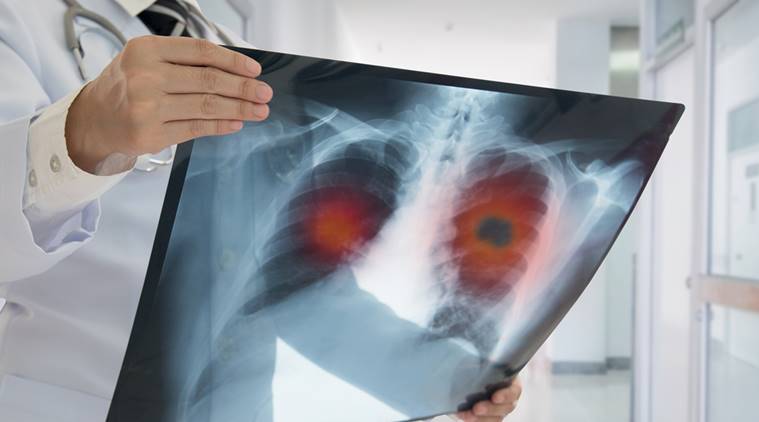Stay updated with the latest - Click here to follow us on Instagram
IIT Bombay develops platform that can detect lung cancer from breath
The same platform can also be used to monitor air pollution levels or detect explosives such as TNT (trinitrotoluene).
 The research project was funded by the Department of Science and Technology’s Nano-mission programme. (Source: ThinkStock Images)
The research project was funded by the Department of Science and Technology’s Nano-mission programme. (Source: ThinkStock Images)
Researchers at the Indian Institute of Technology, Bombay, have developed a platform that can ‘sniff out’ the presence of cancerous cells in the lungs from the breath of a person.
In a paper published in the journal ACS Sustainable Chemistry and Engineering, a two-member team from IIT-B claims that certain chemicals exhaled through breath are indicative of lung cancer but are not detected by a conventional breath test. The team, headed by Chandramouli Subramaniam, a professor from the institute’s Department of Chemistry, has developed a system that claims to detect such chemicals in single molecular levels in about a minute.
The same platform can also be used to monitor air pollution levels or detect explosives such as TNT (trinitrotoluene). The research project was funded by the Department of Science and Technology’s Nano-mission programme.
“There are two types of techniques to detect a chemical substance (an analyte): indirect and direct. In the most commonly used indirect method, other molecules called ‘labels’ specifically bind to the analyte and emit a fluorescent light which is detected. In the direct method, the light scattered by the analyte itself has a specific signature that is detected,” said Subramaniam, adding that their new platform uses the direct method called the Raman spectroscopy.
According to the paper, the intensity of the light collected in Raman scattering is inherently very low and, to overcome this, scientists worldwide have developed a method called Surface Enhanced Raman Scattering (SERS). “However, getting a reliable signal has been a problem as the nanoparticles are highly mobile due to Brownian motion of these colloids,” said Subramaniam. To overcome this, the scientists at IIT Bombay have made a “cage” of nanoparticles to trap the analytes.
The newly designed platform was able to detect substances in gaseous, liquid or solid forms. “It utilises the concept that any solid substance will always have a layer of molecules in vapour phase at its surface. This process helped the platform ‘sniff’ substances like TNT in its solid form – a significant feat considering solids need to be otherwise dissolved to form solutions or be heated to high temperature to be detected. The platform successfully identified TNT in the presence of similar, non-explosive but chemically similar substances like DNT (dinitrotoluene) and nitrobenzene,” said Subramaniam, adding that the platform can be used to make portable spectrometers.
“We are in discussion with an Indian company to develop a handheld Raman spectrometer. We can then couple it with our SERS platform to form a diagnostic device, enabling us to provide early warning signs for lung disorders. A security screening device could also be potentially built,” he said.







